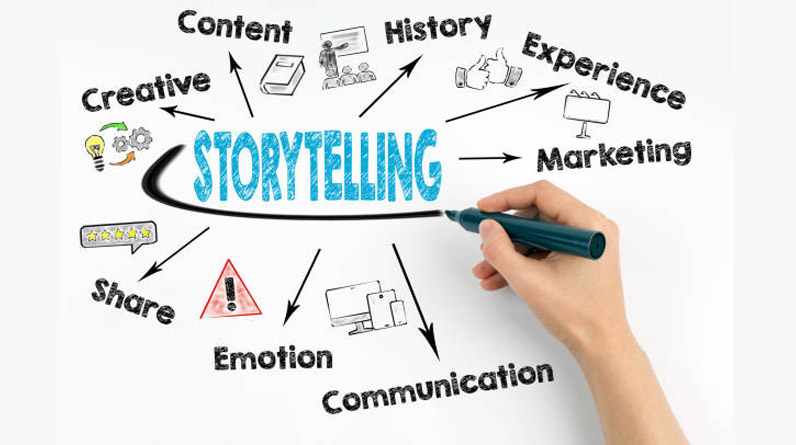In an era of information overload, where consumers encounter thousands of marketing messages daily, traditional advertising struggles to break through the noise. Yet there’s one timeless tool that consistently captures attention, builds trust, and drives action: storytelling.
But here’s what many businesses get wrong: they treat storytelling as a creative flourish rather than a strategic revenue driver. The truth is, when executed with intention and precision, storytelling isn’t just about making your brand likable—it’s about making your brand essential.
Why Storytelling Matters More Than Ever in Modern Marketing
The marketing landscape has shifted dramatically. Consumers no longer respond to feature-focused messaging or bold claims about being “the best in the industry.” Instead, they’re drawn to narratives that help them see themselves solving their problems and achieving their goals.
The Neuroscience Behind Storytelling
Research from Harvard Business School reveals something remarkable: when people hear facts and figures alone, only the language processing parts of their brains activate. But when they’re told a compelling story, multiple areas light up—including regions responsible for movement, emotion, and sensory experience.
Neuroscientist Paul J. Zak discovered something even more powerful. When stories create tension and emotional engagement, they trigger the release of oxytocin (the empathy chemical) and cortisol (the attention chemical). His research found that these neurochemical responses predict behavior change with 80% accuracy.
What this means: Stories don’t just entertain your audience; they literally rewire how prospects think about solutions to their problems.
The Business Impact of Storytelling
| Metric | Impact |
|---|---|
| Brand Recall | Stories make facts 22x more memorable than facts alone |
| Sales Conversion | DocSend increased sales deck completion from 17.5% to 65.4% by restructuring with storytelling |
| Customer Acquisition | Ahrefs generates 230k+ monthly organic visitors using product-led storytelling |
| Customer Lifetime Value | Mailchimp acquired 14k customers daily through customer success stories |
These aren’t vanity metrics—they’re direct revenue indicators.
The Four Core Elements of Business Storytelling
Not all stories are created equal. Effective business storytelling follows a proven structure that guides prospects through their decision-making journey.
1. Character: The Customer as Hero
This is where most brands stumble. They make their company or product the protagonist. The reality? Your customer is the hero of the story, and your product is the tool that helps them win.
Example: Instead of “We developed the fastest email automation platform,” try: “Sarah was drowning in manual email campaigns, spending 20 hours per week on tasks that didn’t move the needle. She needed a way to reclaim her time without sacrificing campaign effectiveness.”
The second version immediately creates identification. Prospects see themselves in Sarah’s situation.
2. Goal: The Obstacle They’re Trying to Overcome
Every compelling story has tension. In business storytelling, that tension comes from the gap between where your customer is now and where they want to be.
Define their goal clearly:
- What are they trying to achieve?
- What’s preventing them from achieving it?
- What would success look like?
3. Conflict: The Challenges Without Your Solution
This is the middle of your story, and it’s where emotional engagement peaks. Don’t rush past the struggle. Let your audience feel the weight of the problem.
What failed solutions have they tried? What resources have they wasted? What opportunities have they missed? The more visceral the conflict, the more powerful the resolution.
4. Resolution: The Transformation Your Product Enables
This isn’t about listing features. It’s about painting a picture of the better future your product makes possible. What becomes possible now? How does their day-to-day change? What can they focus on instead?
From Theory to Practice: The Storytelling Framework

Step 1: Know Your Audience at a Deep Level
Before you write a single word, you need to understand your target customer intimately. Not just demographics, but:
- Their primary pain points and frustrations
- How they currently attempt to solve problems
- Why those solutions fall short
- What success looks like to them
- How they talk about these challenges (their language, not your industry jargon)
The best way to gather this information? Conduct customer interviews. Ask open-ended questions. Listen more than you speak.
Step 2: Identify Your Core Message
What’s the one thing you need prospects to believe about your product? Distill this into 6-10 words. This becomes your guiding star for all storytelling moving forward.
Examples:
- “Reclaim your time from manual tasks”
- “Scale your business without scaling your team”
- “Turn data into actionable insights instantly”
Step 3: Build Your Story Arc
Structure your narrative with these elements:
| Story Element | Purpose | Length |
|---|---|---|
| Hook | Capture attention immediately | 1-2 sentences |
| Context | Establish the character and their world | 2-3 sentences |
| Conflict | Present the challenge with emotional weight | 3-4 sentences |
| Resolution | Show how your product transforms the situation | 2-3 sentences |
| Call-to-Action | Direct readers to the next step | 1 sentence |
Step 4: Choose Your Medium
The same story can take many forms. Consider where your audience spends their time and what formats resonate with them:
- Blog Posts: In-depth storytelling with time for character development and context
- Video: Most effective for creating emotional resonance and demonstrating transformation
- Case Studies: Real customer stories with quantifiable results
- Social Media: Shorter narratives that tease the bigger story and drive traffic
- Sales Presentations: Product-led stories that guide buyers through their consideration journey
- Podcasts: Intimate, conversational storytelling for building connection over time
Common Storytelling Mistakes to Avoid
Mistake #1: Making Your Product the Hero
Your product is the tool. Your customer is the hero. Keep that relationship crystal clear throughout your story.
Mistake #2: Jumping Straight to Features
Features answer “what.” Stories answer “why” and “so what.” Before you mention a single feature, help prospects understand why they should care.
Mistake #3: Using Inauthentic Language
If you wouldn’t say it in conversation, don’t write it. Use contractions. Use short sentences. Speak to your audience as a peer, not as a broadcaster.
Mistake #4: Telling Instead of Showing
Don’t tell prospects your product saves time. Show them a specific scenario where time is reclaimed and explain what becomes possible with those extra hours.
Mistake #5: Inconsistent Messaging
Your story should remain consistent across channels. Different formats, same core narrative. This consistency builds familiarity and trust.
Measuring Storytelling Effectiveness
Storytelling is only valuable if it drives business results. Track these metrics:
- Engagement Metrics: Time on page, scroll depth, video watch time, social shares
- Conversion Metrics: Click-through rates, content downloads, demo requests
- Customer Feedback: Testimonials, sentiment analysis, qualitative interview insights
- Business Outcomes: Customer acquisition cost, customer lifetime value, revenue attributed to content
Pro tip: Look at six-month trends rather than monthly snapshots. Storytelling builds momentum over time as your audience discovers, engages with, and shares your narratives.
The Future of Business Marketing is Storytelling
As artificial intelligence makes it easier to generate generic content, human stories become more valuable, not less. Prospects crave authenticity, connection, and meaning. They want to work with companies that understand them and have earned their trust.
Storytelling is how you do that at scale.
The businesses dominating their markets aren’t doing it with bigger ad budgets or longer feature lists. They’re doing it with better stories—narratives that transform how prospects see their problems and imagine their futures.
Start today. Interview one customer. Understand their journey. Build their story. Watch what happens when you position them as the hero of their own transformation.
That’s the art of storytelling in business marketing. And it’s far more powerful than any ad ever could be.


